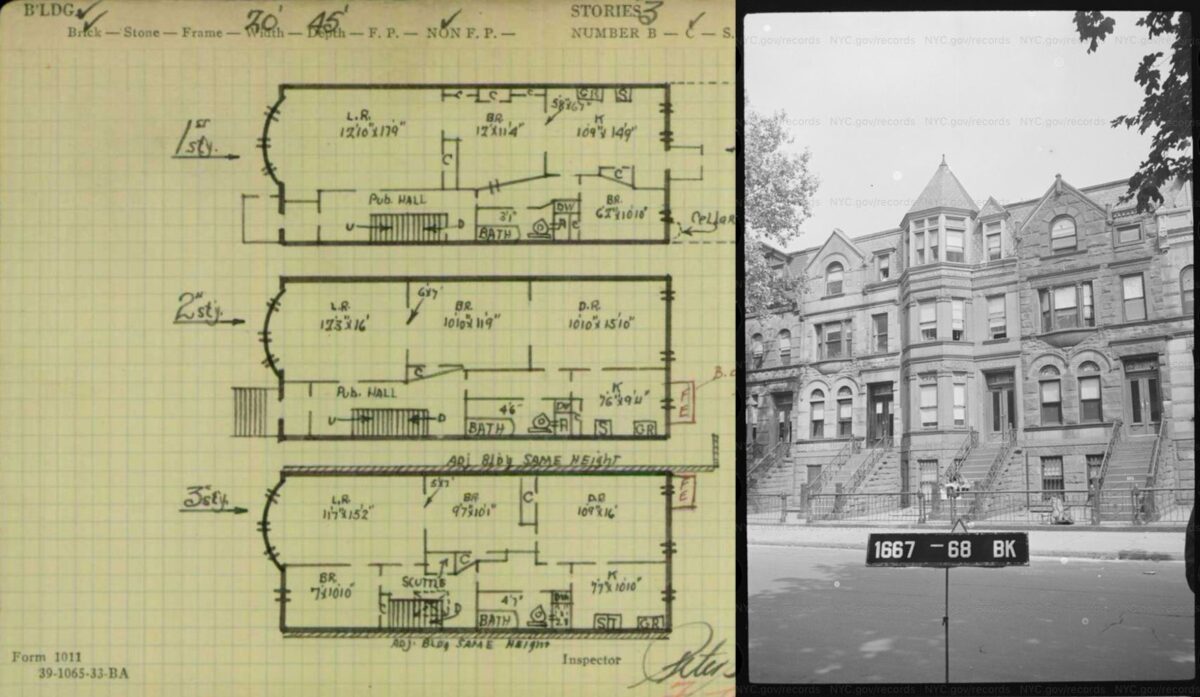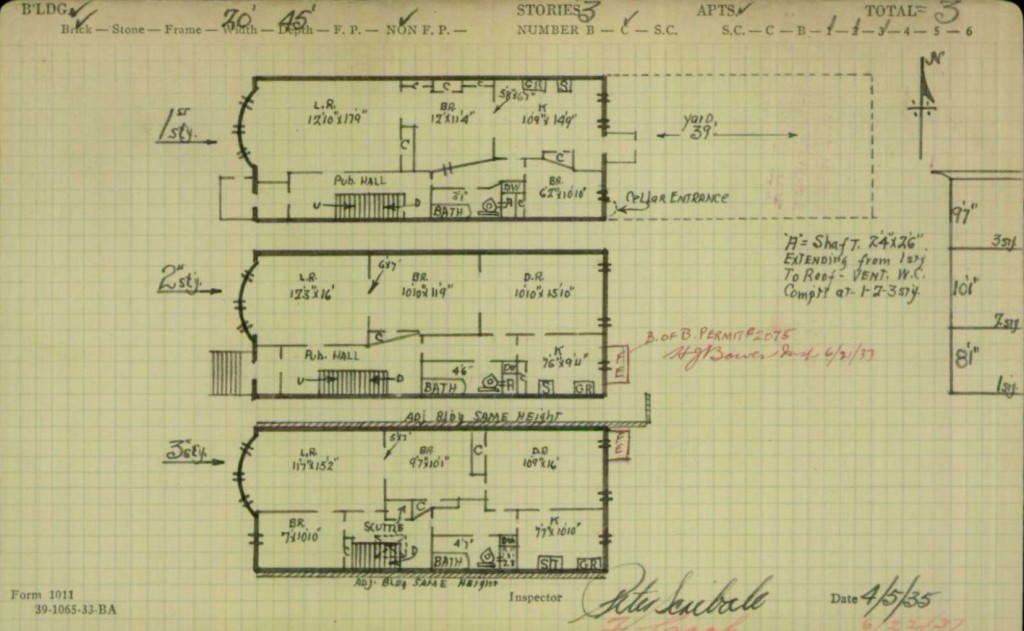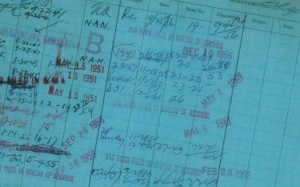SOLVING YOUR BROWNSTONE’S I-CARD MYSTERY

Brownstone Detectives investigates the history of our clients’ homes.
The story you are about to read was composed from research conducted in the course of one of those investigations.
Do you know the history of YOUR house?
********************************************************************************************************************************
One of the many weapons in the arsenal of the New York City old house detective is an official city document known as the I-Card.
Many homeowners have heard of them, few know what they are, and even less have ever seen one.
The reason is simple – the I-Card was never meant for public consumption.

WHAT IS THE “I-CARD”?
The I-Card is a paper record that the City of New York used, starting in 1902, for documenting the required building improvements of tenements and multiple-dwelling buildings, and for regulating the use of these type buildings.
The I-Card came about around the turn of the last century when the “progressives” started focusing on building codes, sanitary conditions, and safety issues in the tenements. The Tenement Act of 1901 regulated these issues, requiring old tenement building (pre-1901) to bring their buildings up to this code and post-1901 buildings to be built according to the provisions in the new Act.
So, the city came up with a way to track the required improvements that certain buildings had to have made. (The “I” in “I-Card” refers to “improvements made” on a structure after its construction.)

What was being regulated here? Primarily things like making sure that a tenement had proper and adequate fire-escapes and means of egress through the roof, ensuring proper ventilation and lighting in the interior parts of buildings, &c.
According to the new Tenements Act, the Tenement House Department had to take the first step of determining where all of the 83,000 tenements were within the entire City and then to review them all. To do that they had to develop a standard means of inspection that could be learned quickly by the men who worked at the department, as well as filed so that these cards could be drawn upon readily for future inspections.
These cards would also contain the drawings or a diagram of each building, showing, like an architectural record, the size and shape of each tenement house, measurements of unoccupied areas, showing shafts, courts, yards and other open spaces. It also often included diagrams of the “second or typical floor of the building” and showed the “size and arrangement of the rooms and all doors, stairs, windows, halls and partitions.”
WHERE IS MY I-CARD?
Not all houses built before 1938 even have I-Cards. This is likely because they were misfiled, lost, or destroyed for some, probably accidental, reason.
But not all pre-1938 structures were even meant to have them. If you house was never used as a multiple-dwelling (i.e., housing three families or more), or suspected of such (and, thus, scheduled for an inspection), then your house would not have had one of these in the first place.
To see, though, if your house had one and it it still exists, visit the Housing Preservation Department webpage and, in the lower half of their page, locte the link titled, “Find Building Data.” When the next page appears, click the button “HPD Online.” On the next page, enter the address you’re researching. Then hit “Enter.”
When your building’s page pops up, scan down to the left-hand side of the screen where you will find “Historical Image Cards.” If your building has an I-Card then that will be marked “YES” and you can click on the “View All” link beneath it. This will take you to a page where you can download a “pdf” of your building’s I-Card.
Now, once you’ve gotten your I-Card, you’ll need another primer on understanding it!
But, just ask – a Brownstone Detective is always standing by….
———————————————————————————————————————–
 Brownstone Detectives is an historic property research agency. Our mission is to document and save the histories of our clients’ homes. From our research, we produce our celebrated House History Books and House History Reports. Contact us today to begin discovering the history of your home.
Brownstone Detectives is an historic property research agency. Our mission is to document and save the histories of our clients’ homes. From our research, we produce our celebrated House History Books and House History Reports. Contact us today to begin discovering the history of your home.
